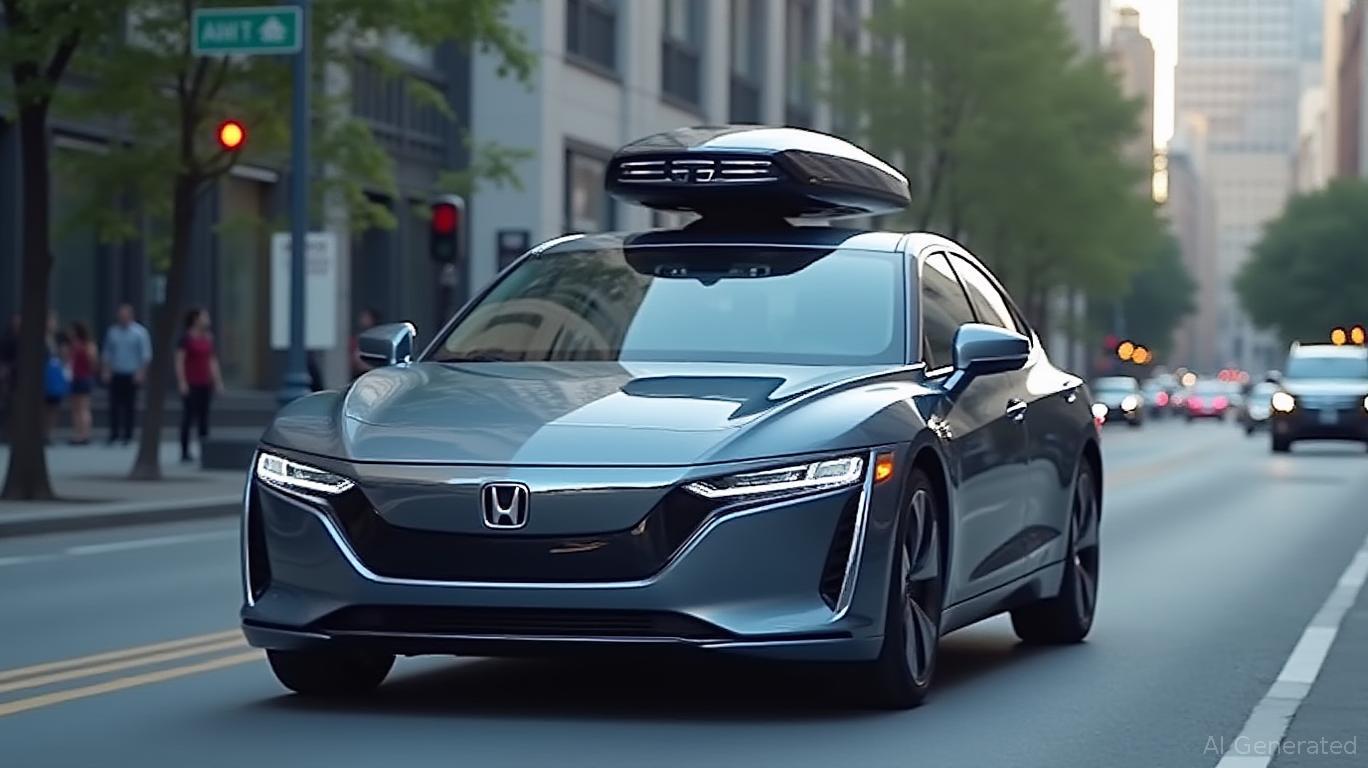The Camera-Driven Autonomy Shift: Why Helm.ai is Redefining the $556B EV Market
The automotive industry's race to autonomy has long been dominated by a costly arms race: lidar sensors, radar arrays, and high-definition maps. But what if the future of self-driving cars doesn't require any of these? Enter Helm.ai, a Honda-backed startup whose camera-based vision system is now poised to disrupt the $556 billion autonomous vehicle market—and investors would be wise to take notice.
The Cost Disruption: Lidar's $100K Price Tag vs. Helm's Vision
Helm.ai's Deep Teaching™ technology leverages generative AI tools like GenSim-2 and VidGen-2 to simulate real-world driving scenarios at scale, eliminating the need for expensive lidar or radar sensors. For automakers like
, this means slashing production costs by $50,000–$100,000 per vehicle compared to systems reliant on lidar. This is no small figure: Tesla's Full Self-Driving (FSD) suite adds roughly $10,000 to a vehicle's cost, while Waymo's lidar-heavy approach is even pricier.
Honda's Zero Series EVs—set for a 2026 global launch—will be the first mass-market vehicles to adopt Helm's Level 3 “eyes-off” autonomy. This system allows drivers to fully disengage from the road, a capability previously achievable only by Tesla's FSD or Waymo's fully autonomous shuttles. But unlike its rivals, Helm's solution avoids the sticker shock of lidar, positioning Honda to undercut Tesla and Mercedes-Benz in pricing while offering comparable features.
The Scalability Play: Why Vision Beats Sensors in the Long Run
Helm's vision-first approach isn't just cheaper—it's also far more scalable. Traditional lidar and radar systems require geography-specific training and costly HD maps, which limit their global reach. Helm's AI, by contrast, adapts to diverse environments without region-specific data, making it ideal for markets like India or Southeast Asia, where map infrastructure lags behind.
This flexibility is critical as automakers grapple with rising software costs. By 2030, software development could account for 40% of a car's value, per McKinsey. Helm's modular architecture, which integrates with hardware from Nvidia and Qualcomm, allows automakers to upgrade vehicles over-the-air, turning them into “software-defined vehicles” (SDVs) that retain value long after purchase.
The Investment Thesis: Riding the Vision-Driven Wave
For investors, Helm.ai's rise creates two clear opportunities:
Automotive Software Plays: Helm's AI stack is a prime example of the $556B autonomy market's shift toward vision-driven solutions. Backed by Honda's $55 million investment (part of Helm's $155 million Series C), the startup is now in pole position to license its tech to rivals like Volkswagen or Toyota.
Hardware Partnerships: Look to suppliers of camera systems and AI chips. Honda's collaboration with Renesas Electronics to develop a 3nm 2,000 TOPS chip underscores the demand for high-performance silicon to power vision-based autonomy.
Honda's shares have lagged behind Tesla's since 2020, but if the Zero Series delivers on its vision-driven cost advantages, this gap could narrow sharply. Meanwhile, Qualcomm (QCOM)—a key partner for Helm's AI processing—has outperformed the S&P 500 in 2024, benefiting from the rise of SDVs.
Risks and Realities: Can Cameras Outperform in the Dark?
Critics argue that camera-based systems falter in low-light or extreme weather conditions. Helm counters with advancements like real-time 3D reconstruction from 2D images, which its CEO claims narrows the gap with lidar in challenging scenarios. Regulatory hurdles also linger: while Level 3 autonomy avoids full self-driving certification, it still requires rigorous validation.
Yet the market is moving Helm's way. 73% of automakers now prioritize vision-based autonomy for cost reasons, per a 2025 McKinsey survey. Even Waymo, once a lidar purist, is now exploring hybrid systems.
Conclusion: A Disruptor's Time to Shine
Helm.ai's vision-first strategy isn't just about cost—it's about redefining what autonomy means. By slashing expenses and expanding reach, the startup is positioning itself as the go-to partner for automakers seeking to democratize self-driving tech. For investors, this is a rare chance to bet on a category leader in a market primed for explosive growth.
The question isn't whether vision will win—it's who will profit from it. Helm.ai, Honda, and their ecosystem of suppliers are already ahead of the curve. The cameras are rolling; the future is in sight.

Comments
No comments yet